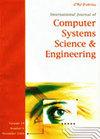Multi-Agent Dynamic Area Coverage Based on Reinforcement Learning with Connected Agents
IF 2.2
4区 计算机科学
Q2 Computer Science
引用次数: 4
Abstract
Dynamic area coverage with small unmanned aerial vehicle (UAV) systems is one of the major research topics due to limited payloads and the difficulty of decentralized decision-making process. Collaborative behavior of a group of UAVs in an unknown environment is another hard problem to be solved. In this paper, we propose a method for decentralized execution of multi-UAVs for dynamic area coverage problems. The proposed decentralized decision-making dynamic area coverage (DDMDAC) method utilizes reinforcement learning (RL) where each UAV is represented by an intelligent agent that learns policies to create collaborative behaviors in partially observable environment. Intelligent agents increase their global observations by gathering information about the environment by connecting with other agents. The connectivity provides a consensus for the decision-making process, while each agent takes decisions. At each step, agents acquire all reachable agents’ states, determine the optimum location for maximal area coverage and receive reward using the covered rate on the target area, respectively. The method was tested in a multi-agent actor-critic simulation platform. In the study, it has been considered that each UAV has a certain communication distance as in real applications. The results show that UAVs with limited communication distance can act jointly in the target area and can successfully cover the area without guidance from the central command unit.基于连接智能体强化学习的多智能体动态区域覆盖
由于载荷有限和决策过程分散的困难,小型无人机系统的动态区域覆盖一直是研究的热点之一。无人机群在未知环境下的协同行为是另一个难以解决的问题。针对动态区域覆盖问题,提出了一种多无人机分散执行的方法。提出的分散决策动态区域覆盖(DDMDAC)方法利用强化学习(RL),其中每个无人机由一个智能代理代表,智能代理学习策略以在部分可观察环境中创建协作行为。智能代理通过与其他代理连接来收集有关环境的信息,从而增加其全局观察。连接为决策过程提供了共识,而每个代理都进行决策。在每一步中,智能体获取所有可达智能体的状态,确定最大区域覆盖的最佳位置,并分别使用目标区域的覆盖率获得奖励。该方法在多智能体行为者评价仿真平台上进行了验证。在研究中,考虑到每架无人机在实际应用中都有一定的通信距离。结果表明,在通信距离有限的情况下,无人机可以在目标区域内联合行动,并且可以在没有中央指挥单位引导的情况下成功覆盖目标区域。
本文章由计算机程序翻译,如有差异,请以英文原文为准。
求助全文
约1分钟内获得全文
求助全文
来源期刊

Computer Systems Science and Engineering
工程技术-计算机:理论方法
CiteScore
3.10
自引率
13.60%
发文量
308
审稿时长
>12 weeks
期刊介绍:
The journal is devoted to the publication of high quality papers on theoretical developments in computer systems science, and their applications in computer systems engineering. Original research papers, state-of-the-art reviews and technical notes are invited for publication.
All papers will be refereed by acknowledged experts in the field, and may be (i) accepted without change, (ii) require amendment and subsequent re-refereeing, or (iii) be rejected on the grounds of either relevance or content.
The submission of a paper implies that, if accepted for publication, it will not be published elsewhere in the same form, in any language, without the prior consent of the Publisher.
 求助内容:
求助内容: 应助结果提醒方式:
应助结果提醒方式:


